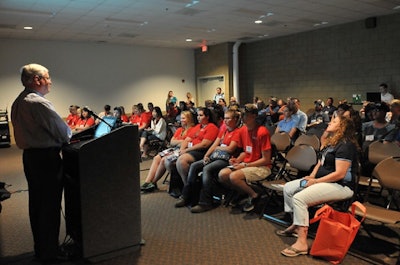
Digital cameras coupled with facial recognition software are being used on production dairy farms to identify individual cows. On swine and poultry farms, systems are under development for utilizing cameras to estimate weights of individual animals, track animal movement and look for specific behaviors such as tail biting in swine and feather pecking in cage-free layers. The number of data points that can be gathered on house conditions, animal activity, flock/herd distribution in the house and condition of individual animals is staggering.
I feel like a kid on Christmas morning when I see examples of everything that can be monitored and analyzed. What a cool collection of toys! These promising systems will remain in the realm of research toys without commitment from producers and integrators to collaborate and share insights on where the pain points are in farm management and provide opportunities for pilot installations.
At the 2021 World Pork Expo in Des Moines, Iowa, on June 9, I attended a few panel discussions on the subject of digital technology development and implementation on swine farms. In one discussion producers said that the most important data to have at their fingertips is the number of head and the weight of the pigs in the house at that time and the history data to compare it to. Having a camera system with supporting software to provide the data automatically saves labor, allows the farm staff to focus more on the pigs, and it allows for better feed management.
Development of systems that do one or a few things, such as camera systems that count animals and estimate, is certainly a step in the right direction, but the ultimate goal is to develop systems that pull in data from all systems on the farm, analyze the data and react to it.
Producers said that the drivers for technology adoption on the farm are the shortage of skilled labor, shortage of labor in general, desire to save cost, and the need to monitor and improve animal welfare. It was suggested that technology will be used first to control the barn, then to control the pen control the pen and finally move to the individual monitoring and reacting to the individual animal.
Tracking devices won’t just be for individual animals. If workers are provided with wearable devices, they can be tracked and messaged automatically. If the camera detects a sow in distress, the closest worker to the pen could be alerted. The alerts wouldn’t always have to go to a person, a robot could be deployed to spread birds out in the house or sent out to retrieve floor eggs detected by the in house camera system. The possibilities are almost endless. But the technology companies need the market expertise of producers to ask the right questions and find solutions.


















